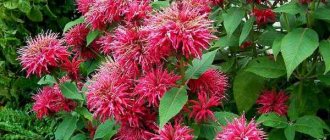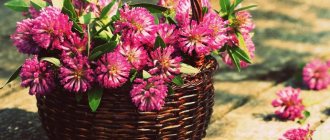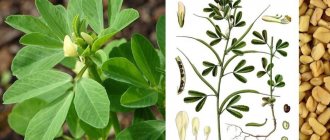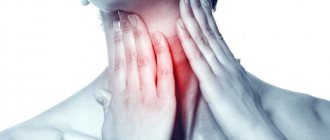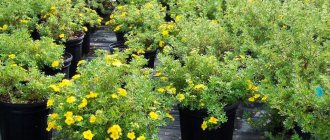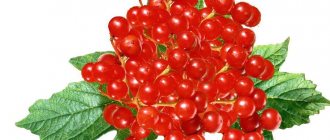Historical reference
Hibiscus is an unpretentious plant, the seeds of which were brought from India to Malaysia and Africa, then to Brazil and Jamaica.
In 1892, 2 factories were opened in Queensland (Australia) for the production of tea raw materials. In 1895, the first hibiscus farm in California was launched. And in 1904, industrial cultivation of plantations began in Hawaii.
Until the mid-20th century, hibiscus was considered the main noble plant cultivated in private farmsteads in the Midwest. In 1960, a powerful hurricane swept through the southern states of the United States, which destroyed the plant’s crops. This marked the end of the era of hibiscus cultivation in America on an industrial scale.
Varietal features
From 1920 to this day, there are 2 main types of hibiscus:
- "Rosella." This variety of Sudanese rose grows in India. The bright red drink quickly quenches thirst, perfectly reveals the taste in hot and cold form, in which fruity notes are clearly visible.
- "Hibiscus sabdarifa." Designed to improve the taste of tea mixtures. This type of hibiscus is brewed in its pure form, consumed as an independent raw material, or added as a filler to fruit, floral, green or black teas. Cultivated in Egypt and Sudan.
In addition, the following varieties of hibiscus are distinguished, growing only in the Philippines:
- "Rico." This is the most common type, widely used in the food industry. Distinctive features of the variety are large inflorescences and high yield.
- "Victor". This plant variety is coarser than “Rico” and has fewer inflorescences per stem than its predecessor.
- "Archer" or "white sorrel". A characteristic feature of the species is a smaller amount of red pigment, which is why “Rico” and “Victor” have it. Because of this, Archer's stems are bright green, tough and fibrous. The receptacle and petals are bright yellow or greenish-white. The number of inflorescences in white sorrel is 2 times greater than in previous varieties. Interestingly, this type of hibiscus is more often used in the food and bast industries than for making tea. All parts of the plant are edible and added to salads. Tea brewed from archer is clear and has a light yellow-green hue.
Hibiscus is moisture-loving and sensitive to frost. The best places for cultivating the plant are subtropical, tropical regions with precipitation of 70 - 80%, with an altitude of over 900 meters above sea level. Having a powerful foliage structure, hibiscus needs constant irrigation in low humidity conditions.
The yield of the plant depends on the soil for cultivation; it is preferable that it be fertile. However, you can plant hibiscus on depleted oolitic limestone or sandy loam, where it also takes root well. Under unfavorable conditions, the plant becomes overgrown with non-flowering, branching stems and disappears.
Reproduction method: by seeds or cuttings.
Food use
In cooking, the receptacle of the plant is used, from which the seed capsule and flower petals are separated. In this form, the hibiscus flower cup is ready for use as food. In different countries, different dishes are prepared from hibiscus. In Africa, flower cups and peanut puree are used to make side dishes, sauces or pie fillings.
Flower petals and fresh receptacles are chopped, passed through a meat grinder and a sieve, and used to prepare chutney, jelly, syrup or jam. To soften and enhance the aroma and taste, pour boiling water over the flower mass for 20 minutes.
In the confectionery industry of Pakistan, hibiscus serves as a source of food pectin, which has binding properties. It is used to prepare treats with a jelly-like consistency. Namely, dressings for fruit salads, icing for cakes, pudding. Jelly-like sauces and syrups are abundantly used on waffles, ice cream, gingerbread and pancakes.
In Latin America and Western India, hibiscus is valued as a source for the preparation of refreshing drinks, which are distributed in hermetically sealed vials, bottles, and sterilized jars. In Egypt they drink it with ice in the summer, in Mexico - hot in the winter. In West Africa, the receptacles and inflorescences of hibiscus are used to make red wine.
Interestingly, in Jamaica, a traditional drink for Christmas is made from hibiscus. To prepare a refreshing drink, dry hibiscus raw materials are infused for 24 hours in a clay jug with sugar, grated ginger, and boiling water. Before drinking, add rum to the drink. Drink chilled.
In West Africa, young stems and leaves of hibiscus are used to prepare salads with the addition of meat or fish, herbs and vegetables. In addition, roasted plant seeds are used as a substitute for natural coffee.
What is hibiscus
This is the name of a drink that resembles tea in properties: it is made from a plant, used mainly in dry form, and brewed with hot water. Used in any form: immediately after preparation or chilled. Tea differs from other varieties in its sweet and sour taste. After brewing with boiling water it acquires a red or burgundy color. For comparison, other drinks in this group are brown and yellow in color.
To understand what hibiscus is, you should learn about its composition. Thus, the above-ground parts of the plant are used in production. This provides the characteristic color of the drink. We must also remember that hibiscus belongs to the mallow family. This means that the classic raw material - processed tea leaves - is not used for production. Accordingly, the drink can only indirectly relate to tea.
It has many names: “Kandahar”, “drink of the pharaohs”, “red tea”, “Sudanese rose”, “red sorrel”. The drink has become widespread and is consumed in Europe. It is also popular in Africa. Here hibiscus tea is found under the name “buzo”. In Latin America it is known as "hamaica". In Egypt it is the national drink.
The similarity with classic tea is also due to the packaging - you can purchase dry raw materials in packaging or disposable bags. It is convenient to brew it in any form. But so as not to have to separate the liquid from the tea leaves, it is better to choose the second option.
Hibiscus tea is prepared from hibiscus flowers of the Malvaceae family.
The name of the plant is Rosella (Sudanese rose), originally from India. As its popularity grew, the drink began to spread throughout the world. It is cultivated specifically for tea production. Many people wonder where hibiscus grows. Hibiscus is mainly grown in countries with a tropical climate: Sri Lanka, Thailand, Mexico, Sudan, Egypt, China, and on the island of Java, and on an industrial scale.
The advantage of hibiscus is the ability to grow it at home. To do this, you can try to plant seeds that end up in the bag along with the prepared raw materials during packaging. However, you should remember what hibiscus tea is made from - processed parts of the plant are used. Accordingly, the likelihood that the seeds will germinate is minimal, but you can make an attempt to test this possibility from your own experience.
When studying the characteristics of the finished product, the country of origin must be taken into account. Depending on the area in which the hibiscus grew, the properties of the tea change:
- yellow-orange tint of the liquid after brewing - Mexico, with a salty taste appearing, which may not be to everyone’s liking, since the taste of the product will be greatly changed, in addition, sugar consumption will increase;
- hibiscus hibiscus has a dark burgundy hue - the raw materials were harvested in Thailand, the finished product does not require the addition of sweeteners;
- the red-purple color of raw materials and finished tea will be lighter if the country of origin is Egypt, while the taste of the drink also differs from the properties of the classic version (sourness appears).
Composition and presence of nutrients
The hibiscus drink is characterized by its versatility - it is used for various diseases due to its medicinal properties. This is not only a product with a pleasant taste and aroma, but also a complete source of nutrients:
- vitamins: PP, A, C, group B;
- organic acids, among which are citric, tartaric, linoleic, and more than 10 others;
- Sahara;
- anthocyanins;
- pectins, as well as other polysaccharides;
- antioxidants;
- flavonoids;
- micro- and macroelements: magnesium, calcium, iron, phosphorus, potassium, sodium.
The composition of hibiscus is diverse, which makes it possible to use it for various indications, for example, when internal processes in the body are disrupted. Even if your health is fine, this product is also consumed due to its excellent taste. In this case, disease prevention is ensured, immunity is supported, and resistance to infections is increased.
the drink has a rich chemical composition and has a healing effect on the human body
Hibiscus calorie content and nutritional value per 100 grams
It is used even by those who are on a diet and monitor their nutrition. 100 g contains 0.9 kcal, which allows you to use the product in any quantity (subject to recommendations and taking into account harm). Some food components (fats) are contained in minimal quantities, so they do not affect weight gain. This further expands the possibility of using the drink. The content of proteins and carbohydrates is also insignificant - 0.4 and 7 g, respectively.
What parts of the plant are included in hibiscus tea?
All parts of the plant are used in different areas. Red hibiscus tea can be made from petals, as well as bracts - these are the same “cups” at the base of flowers. This part of the Sudanese rose gives the characteristic color of the liquid, which is due to the presence of certain substances - anthocyanins. Moreover, this product is prepared from raw materials that have been properly grown and dried:
- above-ground parts of the plant are collected by hand, despite industrial volumes;
- pay attention to the appearance and stage of development of the buds, for example, the petals should be red, and the bracts should be fully formed at the flowering stage;
- collection begins as soon as the petals have wilted and the bracts have become fleshy - they have increased several times;
- The plant blooms rapidly - in a matter of hours the petals fall off, and a seed pod is formed from the bud, which is not used for preparing hibiscus;
- it is important to separate the petals from the bracts;
- raw materials are dried under natural conditions, but it is important to protect them from exposure to sunlight;
- If the drying technology is violated at this stage, the finished product will lose its properties at the end - it will be pale, which will not allow you to obtain the desired color, aroma and taste.
Chemical composition
100 grams of dry raw material from the receptacle of hibiscus contains:
- water – 9.2 grams;
- plant fibers – 12.0 grams;
- fat – 2.31 grams;
- proteins – 1.145 grams.
The vitamin and mineral composition of Sudanese rose flowers is represented by the following nutrients:
- calcium – 1263 milligrams;
- phosphorus – 273.3 milligrams;
- iron – 8.98 milligrams;
- ascorbic acid (C) – 6.7 milligrams;
- nicotinic acid (PP) – 3.77 milligrams;
- riboflavin (B2) – 0.277 milligrams;
- thiamine (B1) – 0.117 milligrams;
- carotene (A) – 0.029 milligrams.
Vitamins and mineral compounds are involved in the occurrence of biochemical reactions and ensure the correct implementation of physiological processes.
The energy ratio B: F: Y is 24%: 0%: 48%.
In addition, the hibiscus composition includes:
- Anthocyanins. They exhibit antitumor properties, break down lipids, strengthen the walls of blood vessels, and regulate their permeability.
- Organic acids (tartaric, citric, malic). They have disinfectant and bactericidal effects, relieve inflammation, and strengthen the body’s immune potential.
- Antioxidants. They relieve fevers, exhibit antispasmodic properties, and fight inflammation.
- Polysaccharides. They maintain the strength of cell walls, serve as an energy supplier, and promote tissue repair.
- Flavonoids. Prevent sclerotic lesions, improve the elasticity of blood vessels.
- Pectins. Adsorb harmful substances, stabilize the functions of the stomach, and promote cleansing.
Properties and composition of hibiscus
Hibiscus tea has restorative properties and is a bioregulator.
Includes:
- Vitamin C. Very important for the health of gums, blood vessels, tissue cells, and bone tissue. Actively protects against various types of infections.
- Flavonoids. They act as a kind of protector from ultraviolet radiation, that is, they reduce radiation that has a detrimental effect on the body. In addition, they are also an antibacterial agent.
- Polysaccharides. They are stimulants of immune defense and cleanse the intestines.
- Amino acids. There are only 13 of them, 6 of them are irreplaceable.
- Tannins. They have anti-inflammatory properties, as well as hemostatic properties.
- Quercetin. It cleanses the body of waste and toxins; in addition, thanks to these substances, the liver is cleansed and the excretion of bile is regulated.
- Pectin. Stabilizes metabolism. Reduces cholesterol, improves intestinal motility, as well as peripheral circulation.
- Anthocyanins. Removes excess fats from the human body. Strengthens blood vessels. Anthocyanins are characterized by antitumor activity.
All of these substances are capable of regulating metabolism, and also remove all kinds of toxins and heavy metals from the body.
Useful and harmful properties
Infusions of hibiscus flower cups and leaves are used in folk and traditional medicine in India, Africa and Mexico as an antipyretic, hypotensive, diuretic and choleretic agent. They will reduce blood viscosity and stimulate intestinal motility. In addition, the anthelmintic, antibacterial, hypotensive and antispasmodic properties of the tea drink have now been scientifically confirmed.
In Guatemala, Sudanese rose flowers and juice are used to combat hangovers. In East Africa, when combined with molasses, pepper and salt, it causes a cough.
In India, a decoction of hibiscus seeds is used as a diuretic and astringent. In Brazil, hibiscus roots are boiled and the locals use the resulting solution to rinse their mouths instead of brushing their teeth at night.
In addition to internal use, the leaves of the plant are used externally, they are heated and applied to problem areas of the skin (with purulent formation, wounds). They promote the healing of trophic ulcers.
Medicinal properties of Kandahar:
- Resists the development of infections, bacteria, serves as a natural antibiotic.
- Improves bile production.
- Eliminates swelling, removes excess fluid, relieves scurvy (stalks and seeds).
- Calms the nervous system, normalizes stool (root).
- Regulates the menstrual cycle in women by relieving spasms of the smooth muscles of the uterus (juice).
- Has a beneficial effect on the liver and kidneys (flower extract).
- Normalizes blood pressure (decoction).
- Stimulates hair growth.
- Cleanses the body (removes unnecessary metabolic products, heavy metals, waste, toxins, under-oxidized substances, unprocessed food residues).
- Relieves stomach colic.
- Reduces cholesterol levels, strengthens the heart.
- Prevents the growth of malignant tumors.
- Relieves the effects of alcohol intoxication in the body.
- Speeds up metabolism, stimulates fat burning.
- Improves memory, activates brain activity.
Hibiscus petals are used in the cosmetics industry to produce perfumes, anti-aging skin care products, bubble baths, and shampoos.
A liquid extract from fresh flowers and leaves of Sudanese rose inhibits the growth of staphylococcus strains, has antibacterial activity against bacilli, kills harmful intestinal microorganisms, while preserving beneficial microflora.
The anti-inflammatory effect of hibiscus is used in medicine to treat diseases of the upper respiratory tract (bronchitis, pharyngitis, laryngitis, tracheitis) and urinary tract (cystitis).
Interestingly, in China, Sudanese rose flowers are used as a means of normalizing blood circulation and preventing the formation of blood clots in the body.
In addition, the sweet and sour crimson drink improves the general condition and is indicated for:
- nervous overstrain;
- loss of appetite;
- chronic fatigue;
- increased physical activity.
To improve complexion, hibiscus decoction is frozen in the form of cubes, which should be used to wipe the forehead, cheeks, nose and chin daily (morning and evening). And to reduce the oiliness of hair, cool freshly brewed hibiscus flower tea to room temperature and rinse washed hair with it.
Contraindications:
- stomach ulcer, gastritis;
- tendency to allergies;
- children under one year old;
- lactation period;
- exacerbation of cholelithiasis and urolithiasis;
- increased stomach acidity;
- insomnia;
- individual intolerance.
Recipes
There are several ways to brew red tea. The most common is to pour boiling water over the leaves and leave. This is how any tea is prepared, be it medicinal or regular black (green). You can lightly boil the hibiscus leaves for a few minutes, as is done in some countries. The tea is sour, so it is advisable to sweeten it.
Now the most useful option for preparing a red drink. Pour cold water over the leaves and leave for 5-6 hours. The result will be a drink similar to if we prepared it using boiling water. At the same time, all useful compounds pass into the water without being destroyed. To enhance the medicinal properties, you can add stevioside, honey, lemon, cinnamon, ginger, and mint to the drink.
Hot hibiscus
A drink made from Sudanese rose is good to drink during the cold season. Hot ruby infusion not only brings a bright note to a dull autumn landscape. It warms, tones and drives away bad moods. Substances contained in exotic tea strengthen the immune system and make the body immune to respiratory diseases.
The hot drink helps people with high blood pressure, diabetes or pre-diabetes. With constant strain on the eyes, it makes it possible to preserve vision. Red tea is used for external use in the form of lotions. They treat eczema, psoriasis, and other inflammatory processes on the skin.
Hibiscus for the heart
American scientists conducted an investigative experiment in which 64 people of different age groups with diseases of the cardiovascular system took part. People were divided into equal groups. The first was given hibiscus herbal tea three times a day for 1.5 months, the other was given a placebo, which in taste and appearance resembled modern heart pills. At the end of the experiment, all participants were subject to a thorough medical examination.
Thus, in the first group, a decrease in pressure was recorded by 6 – 13%, in the second – by 1.3%. Scientists have concluded that the healing effect of hibiscus flower tea is due to the content of flavonoids and phenolic acids (antioxidants), which form a natural barrier against the harmful effects of free radicals. Thanks to this property, hibiscus reduces the risk of developing cardiac pathologies such as stroke, arrhythmia, and heart attack.
During the experiment, no other side effects were identified. The main condition is not to drink the healing drink on an empty stomach, since the decoction contains many natural acids.
To improve the condition and normalize blood pressure, hibiscus should be consumed regularly, at least 3 cups per day (250 milliliters) for 6 weeks. Otherwise, you will not feel its noticeable effect on the body.
Benefits of hibiscus tea for men
Hibiscus is considered a real male plant, as it allows you to cope specifically with male diseases. It does not have a direct effect on the genital area, but improves blood circulation. Thanks to hibiscus, you can remove cholesterol and improve blood clotting.
Tea will be useful for men whose work involves high emotional experiences and intellectual work. The drink will prevent emotional exhaustion and prevent insomnia.
Hibiscus has a pronounced diuretic effect, which makes it possible to cope with genitourinary diseases. In addition, it has antibacterial properties, therefore it is recommended for infectious diseases.
Anthocyanins, which are contained in large quantities in the plant, will prevent the occurrence of heart and vascular diseases.
How to use hibiscus?
To prepare a herbal drink, hibiscus flowers can be brewed in their pure form or various ingredients can be added: pieces of fruit, berries, cardamom, mint, lemon balm, honey, vanilla ice cream, cinnamon, ginger.
Residents of tropical countries crush the leaves of the Sudanese rose and add them to vegetable salads, and use the seeds as a spice for first courses.
Hibiscus adds new flavors to jelly, jam, cakes, and fruit drinks.
The bright red herbal drink is served hot or cold (with or without sugar). In the second case, it is poured into glasses and decorated with a straw.
Hibiscus tea harm and contraindications
People who have gastritis with high acidity will have to stop drinking the drink.
At the stage of exacerbation of gastrointestinal diseases, tea is also contraindicated for consumption. Tea will provoke heartburn, further irritating the gastric mucosa. You should not drink the drink during an exacerbation of urolithiasis. You should not drink it if you have gallstones.
It should be remembered that hibiscus quite often causes an allergic reaction, so tea should be introduced into the diet with caution. In childhood, it is not recommended to administer it in the presence of diathesis.
How to choose?
The quality of the product directly depends on the technology of collection, processing and storage method of raw materials. When buying tea, first of all pay attention to the color of the kenaf. When dried properly, the flowers should be burgundy or deep red. If they are dark or dull, it means that moisture was evaporated from the petals in the wrong way. Hibiscus made from such raw materials will be tasteless.
The quality of the drink is influenced by the size of the hibiscus petals. Flowers packaged in bags or ground into powder are considered regular tea. This is a low-grade product with the aroma of the plant. The most valuable and healthy drink is considered to be one brewed from whole Sudanese rose petals.
After purchase, the hibiscus is poured into a ceramic bowl and tightly closed with a lid. The shelf life of dried flowers is up to 1 year.
Interestingly, the hibiscus flower in the Hawaiian Islands is considered a symbol of female beauty, so representatives of the fair half of humanity often pin it to strands of hair.
How to brew hibiscus?
Fundamental principles on how to make a tasty, healthy drink from hibiscus flowers:
- Hibiscus petals should be whole, or at least in large parts. To obtain a tasty drink, you cannot use powdered raw materials.
- For brewing, it is better to take a glass or ceramic teapot.
- When preparing the drink, observe the following proportions: 7.5 grams of hibiscus petals (1.5 teaspoons) per 200 milliliters of water. If the tea is too strong, reduce the amount of hibiscus to 5 grams.
- To brew Sudanese rose, it is strictly forbidden to use metal utensils, as they change the taste and color of the noble drink.
Hibiscus tea is an excellent refresher in hot, stuffy weather due to the citric acid it contains.
Brewing methods:
- Place the raw material in an enamel container with boiling water, boil for 3 minutes until the liquid turns bright red and acquires a refined sweetish-sour taste. The advantage of this method is the production of a rich, strong drink, the disadvantage is the destruction of vitamins and other useful substances.
- Place the tea leaves in a cup, add hot water, the temperature of which should vary in the range of 80 - 95 degrees. Let the tea steep for 4 – 6 minutes with the lid closed. The drink obtained by this method has a less rich taste than the previous one, but retains a maximum of nutrients.
- To prepare cold hibiscus, hibiscus petals are placed in cold water, which is brought to a boil, sugar is added, removed from the stove, infused and cooled. Serve with ice.
Interestingly, steamed hibiscus petals can be eaten; they contain many amino acids, pectin, and vitamin C.
Harm and restrictions on consumption
1. It should be noted that absolutely any tea is harmful if it is abused, taking it in huge quantities. Hibiscus tea is no exception to the rule, and medicine indicates restrictions on its use. This limit is three cups of drink consumed during the day.
2. This tea should not be drunk by hypotensive people - people suffering from low blood pressure, since already low blood pressure can drop even lower, especially from constant consumption of tea.
3. If you are a fan of strong hibiscus, then after drinking tea you should rinse your mouth with warm water to avoid harm that tea can cause to tooth enamel.
Who absolutely should not drink hibiscus
• Persons undergoing hormonal therapy;
• People suffering from gastritis and stomach ulcers;
• In case of exacerbation of kidney diseases;
• For bladder disease;
• Allergy sufferers should take tea with caution.
For all other categories, hibiscus tea is not contraindicated.

